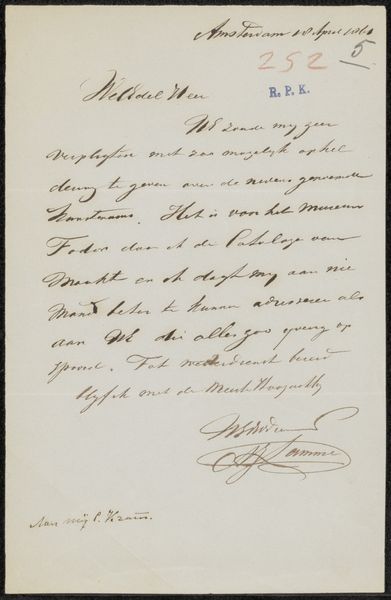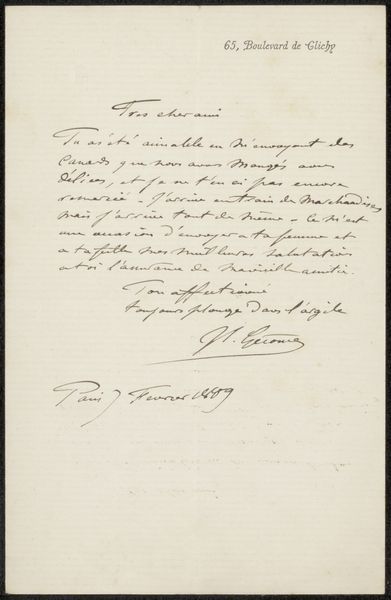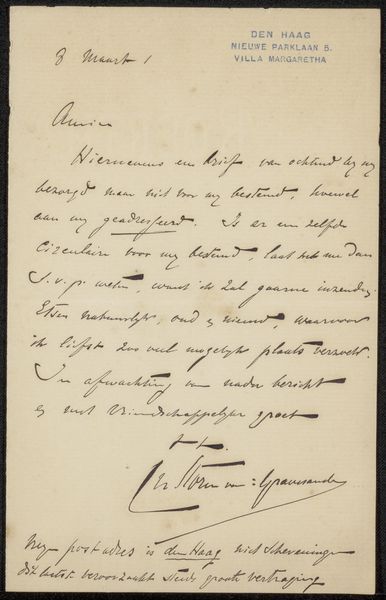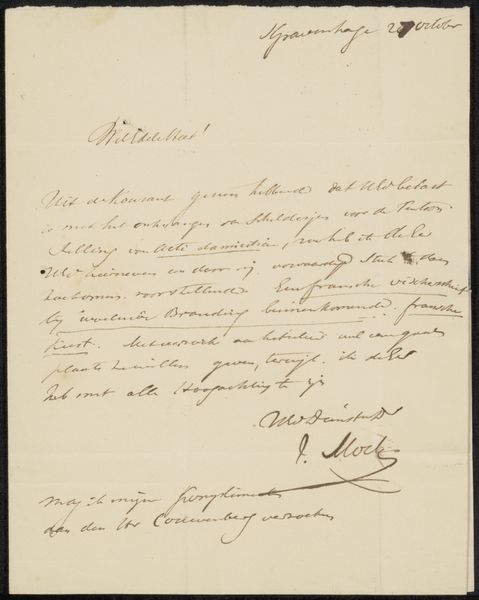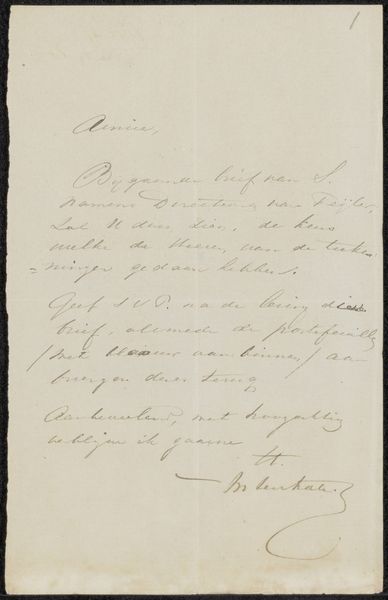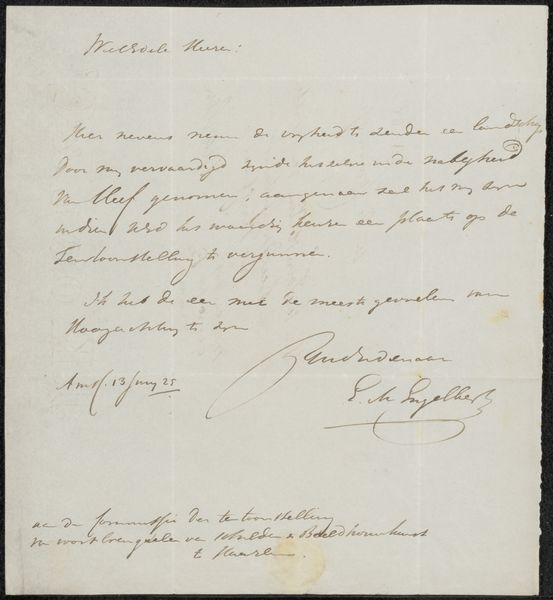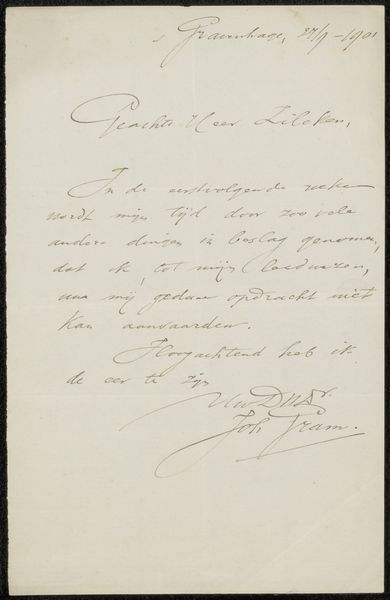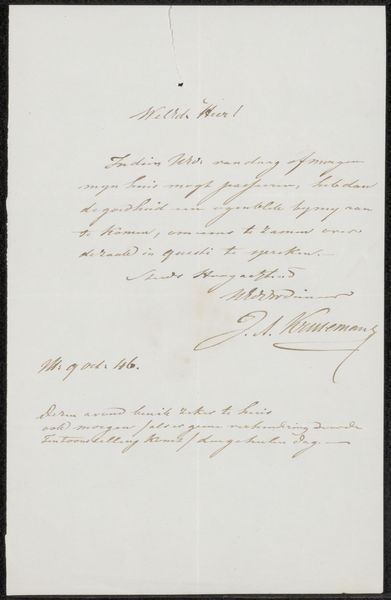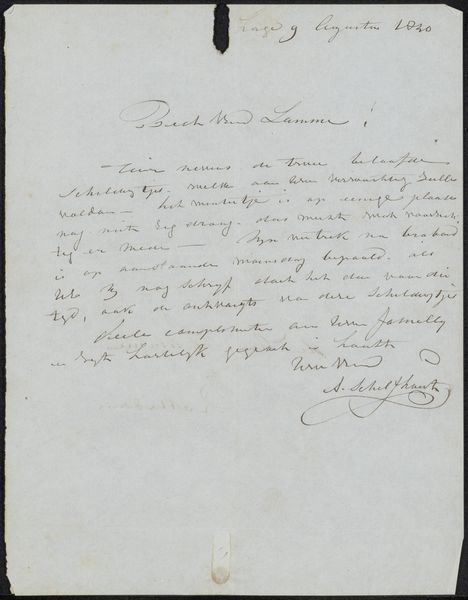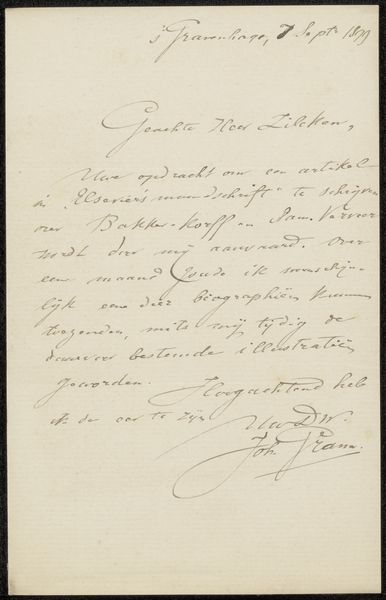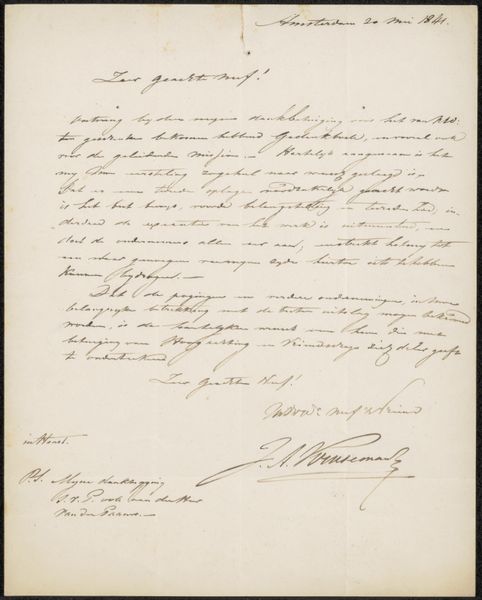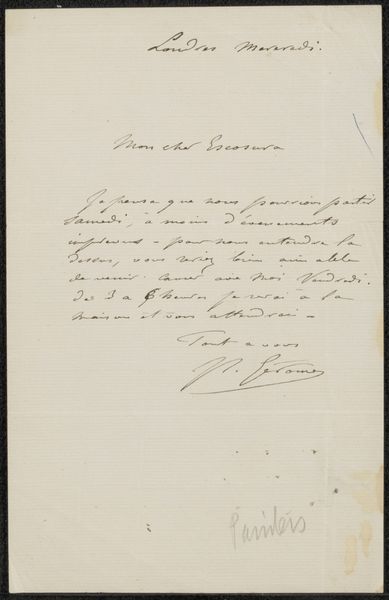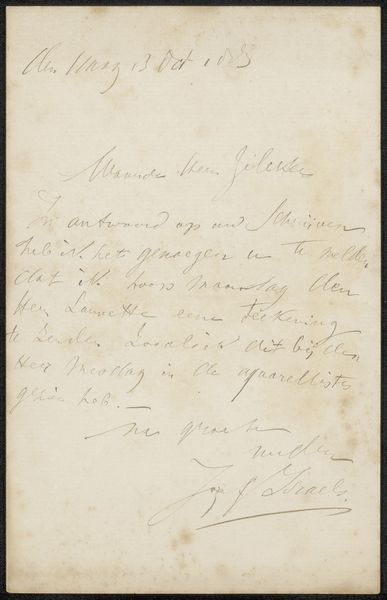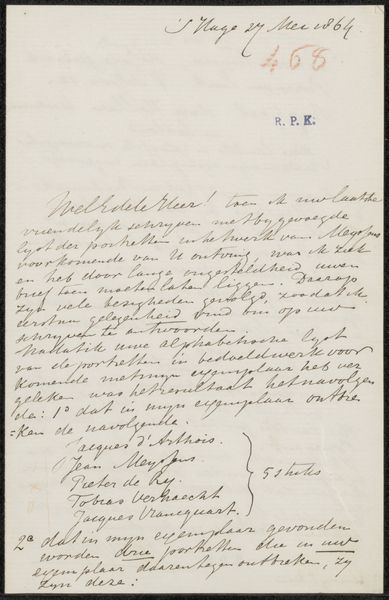
#
ink paper printed
#
pen sketch
#
sketch book
#
hand drawn type
#
personal sketchbook
#
ink drawing experimentation
#
pen-ink sketch
#
pen work
#
sketchbook drawing
#
sketchbook art
Copyright: Rijks Museum: Open Domain
Curator: This piece is titled "Brief aan Philip Zilcken," possibly from 1878, by Johan Gram. It seems to be created using ink on paper, what's your first take on it? Editor: My first impression is the labor. All that beautiful cursive made by hand with a dip pen—imagine the skill and time involved in crafting even a simple letter in those days. You really feel the slow pace of communication. Curator: Indeed, it speaks volumes about a different kind of patience, a slower rhythm. I find it so fascinating that letters often served as miniature reliquaries. What rituals and codes might be embedded in these almost lost handwriting practices? Editor: I’m interested in how access dictated practices. Was this expensive paper? Was the ink hand-mixed? The paper has clearly aged but seems good quality. We're seeing the output of someone with enough access to quality materials and time, hinting at a certain level of social standing that facilitated even this "personal" work. Curator: Certainly, social dynamics shaped artistic expression. But I’m curious about the symbolism here. What was the significance of handwriting, of a carefully constructed script as a reflection of the sender's soul, his integrity? A "personal touch" quite literally manifested through the physical act of writing. Editor: Maybe. Or, perhaps that “integrity” was as much about social expectations. Mastering script was likely essential for someone in Gram's circles. Skill signaled competence, education, reinforcing his position within that social fabric. This isn’t just a soul speaking, but a participant enacting social roles. Curator: Perhaps you're right. These symbolic registers would inevitably mingle. After all, letters form networks between individuals. As such, they offer not only access to the "inner self," but can also work to mediate external relations within social circles. Editor: Agreed. We have to see even "personal" letters as active participants within larger material networks of exchange, influenced by economic and social production that extend beyond singular interpretation. The writing instruments themselves had very real implications. Curator: Yes, considering it, that gives another perspective to how the letter was conceived and created. Editor: Precisely! Now that is truly something to reflect upon.
Comments
No comments
Be the first to comment and join the conversation on the ultimate creative platform.
